Labs
Lab Resources
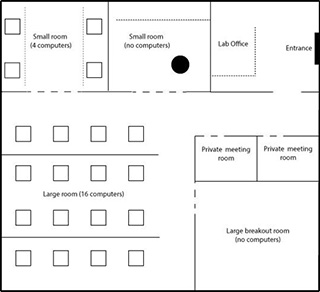
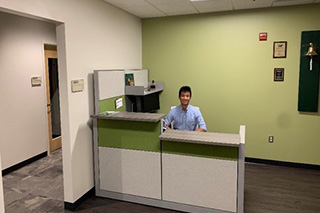
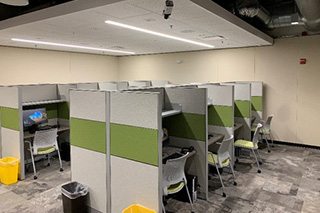
Incorporated within the lab are twenty (20) individual stations and five interaction rooms. The lab is configurable to support diverse research and training including sophisticated biometric experiments, augmented / virtual reality, mobile, focus groups, interviews, and sales training,
Each of the 20 individual stations is equipped with a computer, headset, web camera, iMotions software, CRM software, soft phones, and biometric sensors including: Eye Tracking, Facial Expression, and Galvanic Skin Response (GSR). In addition, four (4) of the twenty (20) individual stations are equipped with Electroencephalography (EEG) capabilities. Three mobile testing stations are also available in the lab to enable experiments with mobile devices or physical objects.
Inside the lab, the ambient lighting and sound can be changed at the direction of the lab manager to simulate real-world environments. The interaction rooms are equipped with remote video and audio recording to provide researchers the ability to monitor interactions without impacting experiments with local observers. Researchers are also supported by a large subject pool that is managed using automated enrollment and tracking software.
iMotions (human behavior/biometric software)
The lab contains multiple sensors designed to track different aspects of human responses to stimuli including: eye-tracking (i.e., attention), facial expression analysis (i.e., emotion), galvanic skin response (i.e., arousal), and EEG (i.e., brain activity levels).
The iMotions software combines data from these multiple sensors to help researchers uncover participants’ underlying responses and emotions.
Follow the links below for more information on iMotions:
- iMotions Home Page: https://imotions.com/
- iMotions Help Page: https://help.imotions.com/hc/en-us
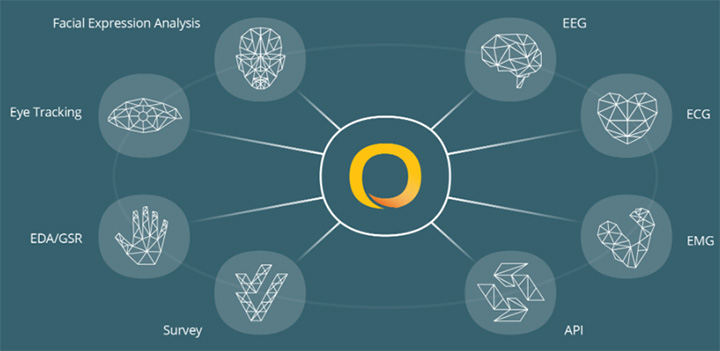
Eye-tracking (Tobii X2 30)
Each of the 20 lab computer stations are equipped with a Tobii X2 30 Eye Tracker.
Screen-based eye tracking allows for the recording and analysis of responses to multimedia stimuli.
Perform screen-based eye tracking on written text, images, videos, websites, games, and software interfaces to provide deeper insights into visual attention.
Using iMotions software, researchers can create tools such as heatmaps, gaze replays, and areas of interest (AOI) output metrics like time to first fixation & time spent. iMotions also provides automated gaze-mapping technology, in which gaze from dynamic environments (i.e., video) is converted to static scenes for simpler aggregation and analysis.
Follow the links below for more information on Eye Tracking:
- Eye Tracking with iMotions: https://imotions.com/eye-tracking/
- Tobii Pro X2 Eye Tracker product website: https://www.tobiipro.com/product-listing/tobii-pro-x2-30/
Facial Expression Analysis
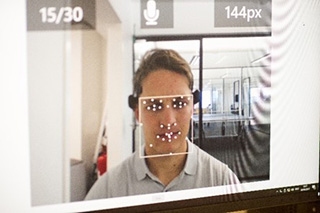
Each of the 20 lab computer stations are equipped with a webcam that allows for facial coding.
Facial coding is the process of measuring human emotions through facial expressions. Facial expression analysis allows researchers to capture individuals’ emotional arousal and facial responses to multimedia stimuli including written text, images, videos, websites, games, or software interfaces.
Using iMotions software, researchers can capture 7 core emotions (joy, anger, fear, disgust, contempt, sadnress, and surprise), facial landmarks (e.g., eye-brow raise or frown), and behavioral indices such as head orientation or attention.
Follow the link below for more information on Facial Expression Analysis:
- Facial Expression Analysis with iMotions: https://imotions.com/biosensor/fea-facial-expression-analysis/
Galvanic Skin Response (Shimmer 3 GSR +)
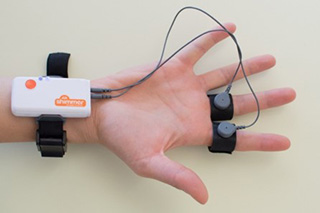
The lab is equipped with 20 Shimmer 3 GSR+ hand-held devices.
The Shimmer 3 GSR+ measures the electrical activity conducted through sweat glands in the skin – skin conductivity – to indicate emotional arousal and stress.
Using iMotions software, researchers can quantify significant moments of arousal through automated peak detection.
Follow the links below for more information on Galvanic Skin Response:
- Galvanic Skin Response with iMotions: https://imotions.com/biosensor/gsr-galvanic-skin-response-eda-electrodermal-activity/
- Shimmer 3 GSR+ product website: http://www.shimmersensing.com/products/shimmer3-wireless-gsr-sensor
NeuroElectrics (Enobio 8-channel 5G)
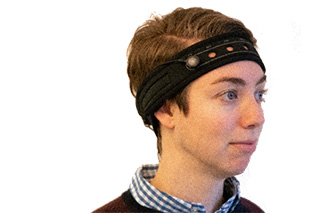
The lab is equipped with 2 Enobio 8-channel 5G headcap and 2 Enobio 8 prefrontal headband sensors.
The EEG (electroencephalography) records electrical activity using electrodes placed on the surface of the scalp. EEG provides insights into how the brain works by detecting individuals’ drowsiness/alertness, wakeful relaxation, and approach or avoidance to multimedia stimuli (e.g., written text, images, or videos).
Using iMotions software, researchers can quantify participants’ brain activity quantifying frequency bands, frontal alpha symmetry, PSD, and others.
Follow the links below for more information on NeuroElectrics:
- NeuroElectrics with iMotions: https://imotions.com/biosensor/electroencephalography-eeg/
- Enobio 8-channel 5G product webite: https://www.neuroelectrics.com/solutions/enobio/8/
Please reach out to the lab management team if there is a program required for research that is not currently supported. If applicable, provide a link to download and install the software (and a license if needed).